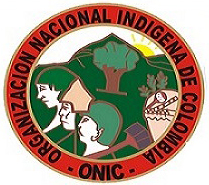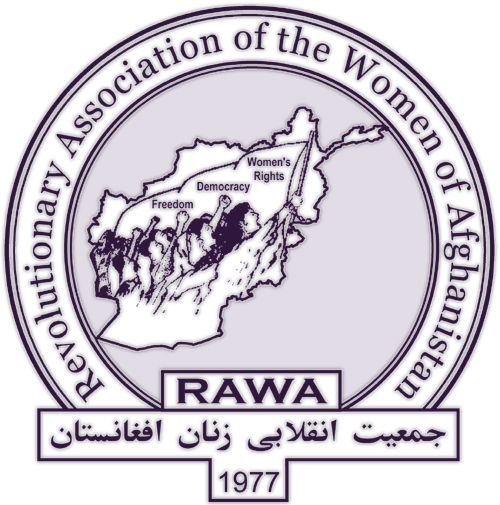Andean Theater
May Day mining disaster in Colombia
An unknown number of miners—perhaps as many as 40—were buried alive as an illegal gold mine collapsed late on the night of April 30 at El Palmar, in Colombia's southern department of Cauca. Local campesinos spent May Day volunteering with Santander de Quilichao municipal brigades in a desperate effort to unearth the victims—none of whom are believed to survive. Thus far, only three bodies have been recovered, according to local Red Cross workers. Local residents said the "owners" of the mine were able to escape, but it is still unlcear exactly who they are.
Colombia: agrarian strike re-mobilizes
Colombia campesinos launched a new national strike on April 28, blocking roads through the departments of Antioquia, Caldas, Tolima and Risaralda. Cesar Pachón, spokesman for campesinos in the central department of Boyacá, said the strike will continue indefinitely until the government of President Juan Manuel Santos helps resolve problems, include small farmers' debts of more than $1 billion. Pachón estimates that 100,000 have joined the strike so far. The decision to strike if the government did not respond by the end of April was taken during the Campesino, Ethnic, and Popular Agrarian Summit, held from March 15-17 in Bogotá. (AP, EFE, El Tiempo, April 28; MR Zine, April 17)
Colombia: 'terrorist' attack on union headquarters
The offices of the Cali Municipal Workers Synidicate (Sintraemcali), located in the center of the Colombian industrial city, was attacked with hurled incendiary bombs April 16, causing damage to the facade and plumbing of the building. Sintraemcali called the bombing a "terrorist attack," and pledged to file a complaint with the Inter-American Human Rights Commission. The attack came five days after a judge in Bogotá ordered the president of the republic, Juan Manuel Santos, to issue a formal pardon to members of Sintraemcali, the Colombian University Workers Syndicate (Sintraunicol) and the Bogotá Telecommunications Workers Synidate (Sintratelefonos), who had been accused by former president Álvaro Uribe Vélez of being linked to terrorist groups and constituting a "Brotherhood of Terrorism." (Radio Caracol, Etorno Inteligente, April 16)
Colombia: pressure grows to expand drug decrim
An official from the capital district government of Bogotá on March 28 called upon Colombia’s national government to open debate on broadening the policy of cannabis decriminalization. "We really need leadership from the Congress and the government to regulate the medicinal and recreational use of marijuana," said secretary general of the Bogotá mayor's office, Susana Muhamad. Despite efforts by the previous president Alvaro Uribe to roll back the policy, since 1994 cannabis has been decriminalized in small quantitites—recently established by the judiciary as up to 22 grams. However, sale and cultivation remain illegal. Muhamad appealed to current President Manuel Santos to examine lifting these limitations.
Bolivia: cocaleros clash with eradication force
Coca-growers in Bolivia's lowland jungle town of Yapacaní on March 27 clashed with police in a protest against the construction of a new base of the Mobile Rural Patrol Unit (UMOPAR), the hated coca-eradication force. Protesters set up roadblocks in an effort to prevent construction crews from breaking ground on the new base. When National Police troops used tear-gas to break up the blockades, protesters replied by hurling rocks. Regional police commander Johnny Requena blamed drug gangs for the opposition to the base, which is being financed by the European Union to the tune of $1.3 million.
Peru: Cajamarca repression sparks protests
Spontaneous protests broke out in the town of Celendín, in the highlands of Peru's Cajamarca region, after the April 8 arrest at a National Police road checkpoint of six members of the "Guardians of the Lagunas," the campesino vigilance committee that has established an encampement to protect lakes threatened by the Conga gold mine project. The six, stopped on their way to the encampement, were charged with "crimes against the public peace" and illegal bearing of arms. They were removed from the region to the coastal city of Chiclayo, where they continue to be held. Among the detained is Fredy García Becerra, mayoral candidate for the local municipal district of Huasmín with the Frente Amplio party. (Celendin Libre, April 11; La Republica, April 10; Celendin Libre, April 9; Celendin Libre, April 8)
Colombia: land rights activist assassinated
A Colombian activist for restitution of usurped lands who was supposedly under special government protection was killed April 9. Colombia's official human rights ombudsman said Jesús Adán Quinto—who had previously reported that agents assigned to protect him had failed to show up—was killed by sicarios (hitmen) as he stepped outisde his home at Turbo in Urabá region of Antioquia department. Quinto was a leader of the displaced population from Cacarica (Riosucio muncipality, Chocó department), a self-declared "peace community" where the Afro-Colombian campesinos have been massively targetted by paramilitary forces since announcing their non-cooperation with all armed actors in 1999. Quinto's fellow activist Carmen Palencia told AFP news service that the people now occupying the lands of the displaced are hiring assassins to terrorize those those who demand return of usurped properties. She said there have been 70 people associated the peace community killed in similar circumstances since 2005. The violence-torn region of Urabá straddles the north of Antioquia and Chocó departments. (AFP, El Espectador, Justicia y Paz Colombia, April 9)
Peru: 24 arrested on Shining Path links
Peru's President Ollanta Humala on April 10 announced that a special police operation has resulted in the arrest of 24 operatives of the Sendero Luminoso guerilla movement. Speaking from Canada, where he was on an official visit, Humala said the detained were leaders of the Movement for Amnesty and Fundamental Rights (MOVADEF), which advocates for prisoners held in connection with the guerilla movement. The operation, dubbed Perseo 2014, coordinated armed forces and National Police units, netting arrests in Lima and five other regions of the country. Among the detained are MOVADEF co-founders Alfredo Crespo and Manuel Fajardo, both attorneys who defended imprisoned Sendero leader Abimael Guzmán. Local media in Peru reported that also among the detained was Walter Humala, a popular folksinger and cousin of the president, who has declared himself an admirer of Guzmán. Authorities said they had proof that MOVADEF is an organ of the guerilla movement, with a police source saying that Crespo went by the code-name "Lucas" in his dealings with Sendero leaders, and Fajardo by the nom de guerre "Bartolo." (EFE, Perú21, April 10)















Recent Updates
1 hour 1 min ago
1 hour 11 min ago
5 hours 51 min ago
5 hours 55 min ago
1 day 6 hours ago
2 days 2 hours ago
2 days 23 hours ago
2 days 23 hours ago
3 days 2 hours ago
3 days 3 hours ago